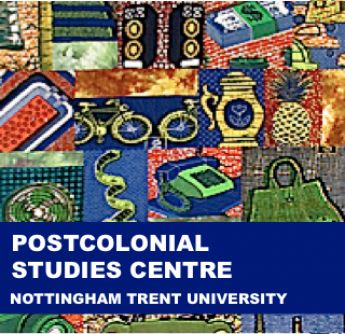Response to ‘Of Warriors and Soldiers: Explorations of the ‘Noble Warrior’ in Contemporary New Zealand Literature and Culture’ (Ulla Ratheiser, University of Innsbruck)
by Sofia Aatkar
26 April 2016
This week, Nottingham Trent hosted Dr Ulla Ratheiser from the University of Innsbruck, Austria. As part of the Postcolonial Speaker Series, Ratheiser delivered a fascinating talk on the trope of the noble warrior in New Zealand literature. Contrary to popular belief, the recurrent figure of the noble warrior is not exclusive to Māori culture, but is also used by the Pākeha[1] community to represent a collective Aotearoa[2] identity. The strength of this shared identity and cultural pride is seen, most publically perhaps, before sporting events when the Haka is performed. Ratheiser informed us that the Haka is a traditional action poem which the Māori execute before battle, but, in contemporary Aotearoa culture, the Haka is also used to represent what it means to be a New Zealander. In this sense, then, when the New Zealand rugby team perform the Haka on the world stage, they combine Māori warriorhood and indigenous minority strength with an expression of national identity in a physical, visible and audible way, which publically conveys New Zealand’s unity. Thus, the image of the noble warrior works to transcend New Zealand’s precolonial, colonial and postcolonial histories.
Certainly, in many ways the figure of the noble warrior can be understood as a unifying and productive emblem in New Zealand culture, because it works to promote a pan-Aotearoan identity. However, Ratheiser employed a critical approach which illustrated some of the complications linked to the seemingly positive image of the noble warrior. She examined the representation of this symbolic figure in four texts, namely Once Were Warriors (1990) by Alan Duff, Tu: A Novel (2004) by Patricia Grace, and Witi Ihimaera’s novels The Uncle’s Story (2002) and The Whale Rider (2003). I found Ratheiser’s analysis of The Whale Rider and Tu: A Novel particularly compelling, as she demonstrated how the ideal of the noble warrior is constricting for texts’ protagonists. Indeed, for The Whale Rider’s female protagonist, Kahu, the idea of the noble warrior is initially depicted as unattainable because she is discouraged from learning traditional Māori combat due to her biological sex, and for the same reason, is almost denied her rightful title of chief. By contrast, for Tu, the image of the returning war hero represents the modern equivalent of the noble warrior; however, he returns from World War II wounded, not glorious, and consequently sees himself as a failure. By interrogating the protagonists’ subject positions, Ratheiser revealed how the image of the noble warrior can also represent a hyper-masculine, empty construct which undermines its otherwise unifying agency, and emphasises the need to understand the noble warrior concept in a wider, less literal context.
In addition to her fascinating insights on the figure of the noble warrior in New Zealand literature, for me, Ratheiser’s talk highlighted the extent to which postcolonial studies marginalises the literature of settler colonies, such as Australia and New Zealand, and how their individual postcolonial contexts are often overshadowed in postcolonial studies.
[1] This is a Māori term which is used to characterise New Zealanders of European descent.
[2] A Māori term which is commonly used to describe the country of New Zealand in its entirety.
Sofia Aatkar is undertaking research on liminality in the postcolonial bildungsroman and will begin her Midlands 3 Cities AHRC-funded PhD on post-1945 travel writing of Caribbean to UK migration in October 2016.
